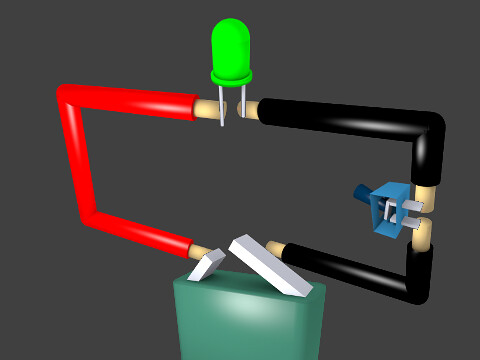Series circuits have one path for current; if one component fails, the circuit breaks. Parallel circuits offer multiple paths, ensuring continuity if one component fails.
TL;DR Series circuits Vs. Parallel circuits
A series circuit is connected in a sequential manner where the current flows through each component one after another. This means that if one component fails or is disconnected, the entire circuit will be broken.
A parallel circuit has multiple pathways for current flow. Each component in this type of circuit has its own separate branch, allowing for independent operation. If one component fails or is disconnected, the other components can still function properly.
What is a series circuit?

A series circuit is like a tightly-knit chain, where components are connected in a single loop. In this type of circuit, the current has only one path to follow. Picture it as if you were walking down a straight hallway with no doors or branches – you have to keep going forward until you reach the end.
In a series circuit, the voltage across each component adds up cumulatively. This means that the total voltage provided by the power source is divided among all the components in proportion to their resistance. So if one component has higher resistance than another, it will receive more voltage and consequently affect its overall performance.
In a series circuit, changes made to one component impact all others downstream. If you remove or disconnect any component from the loop, it breaks the flow of electrons and disrupts the entire circuit.
Series circuits are commonly found in things like Christmas lights or old-fashioned incandescent light bulbs. They are also used for simple devices that require sequential activation, such as doorbells or flashlights.
What is a parallel circuit?

A parallel circuit is a type of electrical circuit where the components are connected side by side, allowing multiple pathways for the electric current to flow. In this configuration, each component has its own separate branch from the power source.
Unlike in a series circuit, where the current passes through each component sequentially, in a parallel circuit, the current splits and flows through each branch simultaneously. This means that if one component fails or is removed from the circuit, it will not affect the operation of other components.
Parallel circuits have several advantages. They allow for independent functioning of multiple devices connected to them. For example, you can turn on one light bulb in a room without affecting others that are also connected in parallel.
Parallel circuits provide increased overall resistance compared to individual resistances. This allows for higher currents to flow and can be beneficial when powering larger appliances or equipment.
Troubleshooting becomes easier with parallel circuits as any faulty component can be isolated and replaced without disturbing others.
Series circuits Vs. Parallel circuits – Key differences
| Aspect | Series Circuit | Parallel Circuit |
|---|---|---|
| Path for Current | Single path for current flow | Multiple parallel paths for current flow |
| Voltage Distribution | Voltage is divided among components, adding up | Voltage is the same across all components |
| Current Distribution | Current is the same through all components | Current is divided among parallel branches |
| Brightness of Bulbs | Bulbs in series are dimmer as voltage decreases | Bulbs in parallel are equally bright |
| Total Resistance | Total resistance is the sum of individual resistances | Total resistance is less than the smallest individual resistance |
| Component Failure | If one component fails, the entire circuit is disrupted | If one component fails, others remain operational |
| Applications | Less common in household wiring; used for specific purposes | Common in household wiring and most electrical systems |
Image Credits
Featured Image By – Daniel Turienzo Nieto on Flickr
Image 1 By – Paulgwilliamson, CC BY-SA 4.0 , via Wikimedia Commons
Image 2 By – Paulgwilliamson, CC BY-SA 4.0 , via Wikimedia Commons








